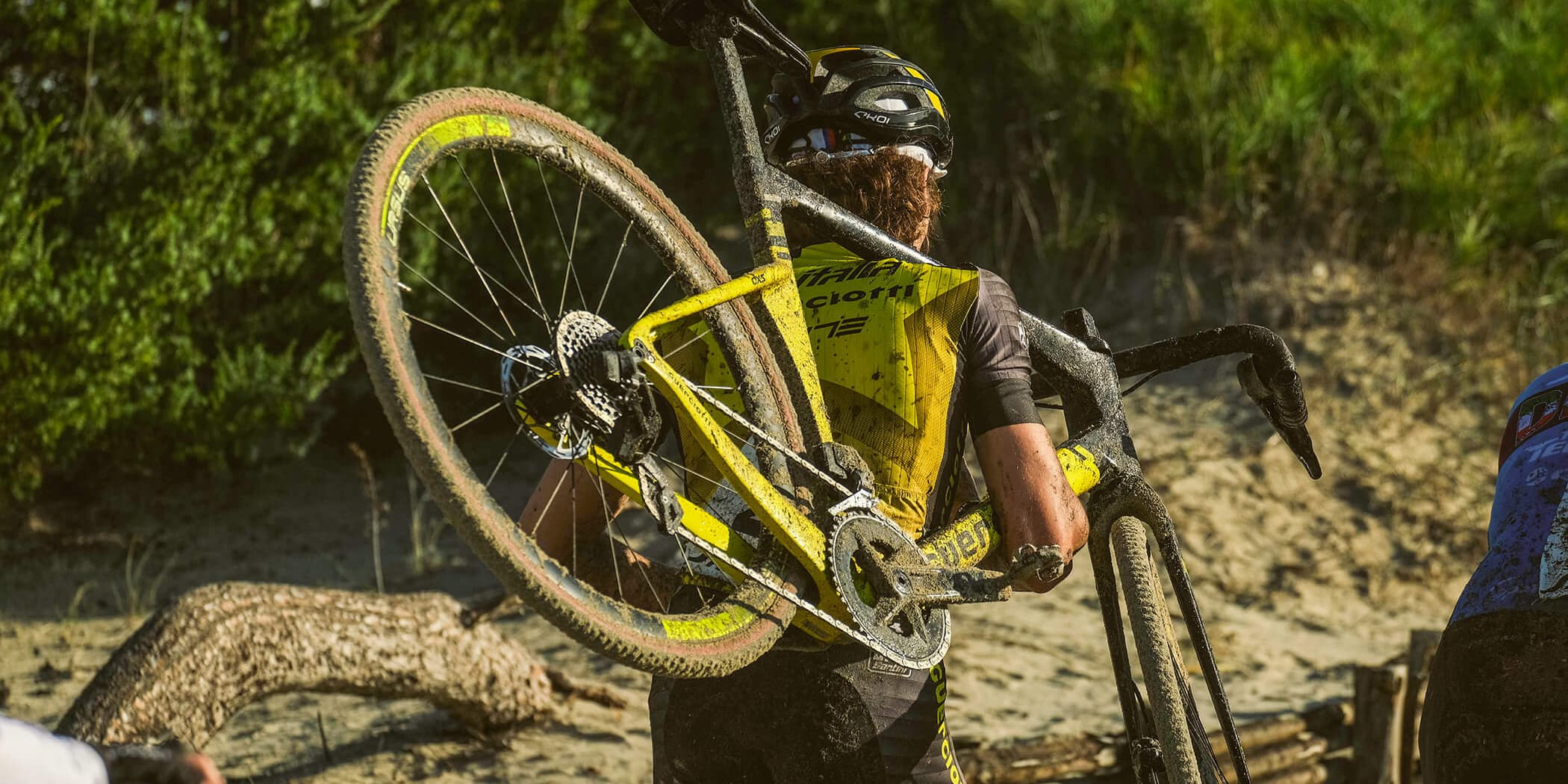Cyclocross is a direct descendant of road cycling, although it is practiced on hybrid terrain, partly asphalt and partly muddy or grassy, in a mix of ups and downs and flats.
There's an image that will immediately make you understand what sport we're talking about: a cyclist racing with his bike on his shoulder.
Cyclocross: what is it?
Cyclocross is a winter discipline. The ideal season for practicing it is from October to February : during this period, road cycling races are suspended and many athletes dedicate themselves to cyclocross.
The races take place on short courses. The terrain is partly asphalt and partly muddy, with branches, brambles, grass, ups and downs, and obstacles. For this reason, in some instances, cyclists dismount and carry their bikes on their shoulders, running through the mud. This is the most famous and iconic feature of this sport.
In each race, athletes cycle the circuit multiple times. Although cyclists line up in a single line at the starting blocks, it is a timed race. The maximum duration is set by the jury.
Pedaling is characterized by sudden changes in gradient and speed, which is why cyclocross requires significant technical and physical skills.
A good cyclocross rider, in fact, has a very advanced mastery of the bicycle, great physical endurance, highly developed muscular power and excellent cardiovascular abilities.
The origins
In the early 1900s, cyclists would take a break from road racing during the cold season. To avoid being left unattended for too long, they trained throughout the cold months by pedaling on grassy fields, muddy terrain, and paved roads. The rough terrain often forced them to lift their bikes and run.
It was a very functional workout for the heart, lungs, legs and muscle strength.
Over time, this form of training has transformed into a true discipline, now equipped with international regulations (since the 1940s) and a federation known as the International Cyclists' Union (UCI) . There are still some road cyclists who dedicate themselves to this activity as a means of intense off-season training.
Cyclocross officially dates back to 1902, when the first races were held in France. Although it is now a sport practiced worldwide, it has remained deeply rooted in its geographical area of origin: in France, Belgium, the Netherlands, and Luxembourg, it is almost a national sport. In fact, these are the countries with the highest medal hauls in major competitions, most notably the World Championships (first held in 1950). In Italy, the discipline has a strong following and the movement is constantly growing.
Cyclocross: cycling and running with the bike on your shoulder
The racing terrain and the need to carry the bike on your shoulder mean that the cyclocross bike has some special characteristics.
Despite the ups and downs and mud, non-suspension bikes are used. The races are short, and a stiff, fast setup is required.

However, these bikes must be highly maneuverable and lightweight, precisely to allow athletes to lift them. Therefore, the frames are made of superlight materials such as carbon, with wheels featuring aluminum rims and profiles . Wheels and hubs are extremely important accessories for the bike's performance in competition, since the fit and smoothness of the pedal stroke depend on them. Quality cyclocross wheels enhance the performance of a well-trained athlete and maximize every watt of energy produced by the body during the race.
But how do you carry a bike on your shoulder? Simply by placing your shoulder and arm through the main triangle of the frame and continuing to walk. This typical cyclocross movement makes this sport a particularly challenging discipline , requiring strenuous and consistent training to be successful.
What's behind a cyclocross wheel and what should you know to choose the best wheel for your needs?
Find out in this interview with Andrea Zen, Ursus engineer





